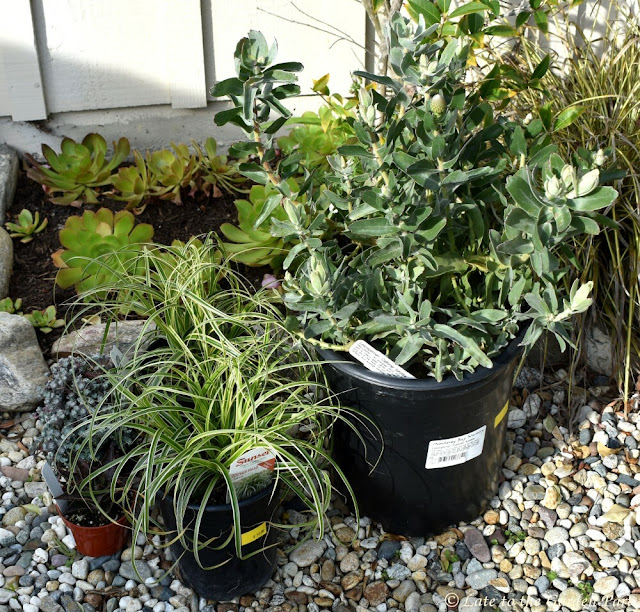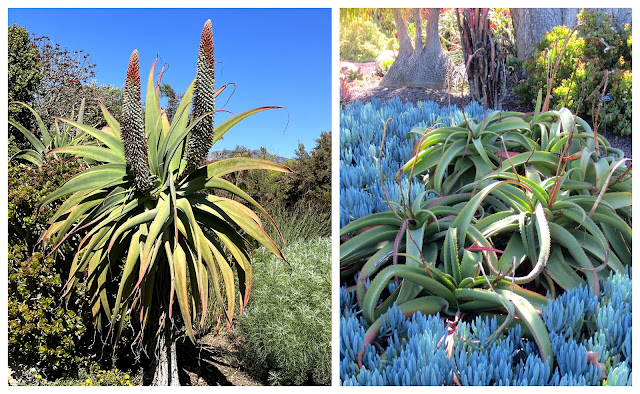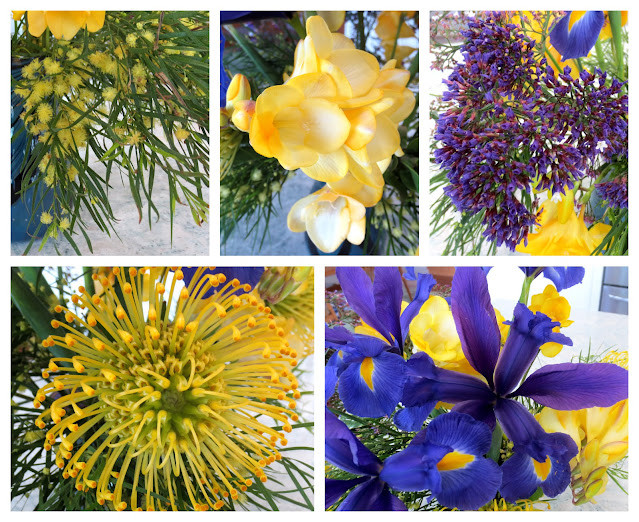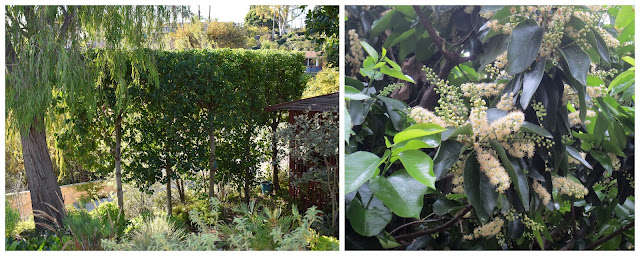Our second nursery stop last Saturday was Terra Sol Garden Center in Santa Barbara County. It's much smaller than Seaside Gardens and doesn't have any display gardens but I've always found it to be a great resource for new plants. I don't think I've ever left that garden center empty-handed, often spending more there than I do at Seaside. (You can view my earlier post on Seaside here.)
 |
| Views of plants for sale |
 |
| Terra Sol offers a lot of garden decor items and a many pots outfitted to serve as fountains |
 |
| Statues, especially Buddhas, are plentiful, if pricey |
The garden center has a well-rounded selection of small-to-large succulents, and it frequently has succulents you don't commonly see elsewhere.
 |
| This Hildewintera colademononis, aka monkey tail cactus, was one of the rarer specimens on display on this visit. (You can see it in flower here.) |
So what did I bring home from this trip?
 |
| This was my haul from Terra Sol, shown below in my garden |
And, for the record, here's what I took home from Seaside Gardens.
 |
| Prior to planting |
 |
| Top row: Lophomyrtus x ralphii 'Little Star', including foliage closeup Bottom row: Leucadendron laxum (still unplanted), Cuphea 'Starlight' (also sold as 'Starfire Pink'), and Coprosma 'Evening Glow' |
As it turned out, we timed our trip well. The skies opened up once more on Wednesday and again on Thursday. It was dry and sunny all afternoon yesterday even though gray storm clouds hovered in the background. There's a slight chance of rain again on Monday but at present it looks like it'll pass us by. Another forecasting agency suggests that there's currently a 58 percent chance of yet another storm a week from today but I'm not convinced of that prospect at present.
 |
| Yesterday morning's view of Angel's Gate, the entrance to the Port of Los Angeles, from my back garden |
Best wishes for a pleasant weekend, in the garden or not. I stopped by my local garden center Thursday afternoon to pick up things to fill in around recent plantings and serve as groundcovers in bare spots so I'll be busy for awhile at least.
All material © 2012-2023 by Kris Peterson for Late to the Garden Party






















































